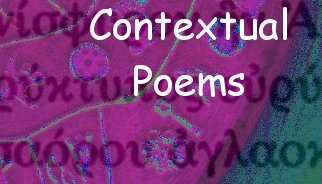
 |
| Home | The Poets | Historical Roots |
| The Sanctuary of Artemis | Zulumathabo Blog |
Contextual poetry
| Contextual poetry is a way to integrate the knowledge of science and history with the language of poetry. Material supporting the poem allows the writer to explore the deeper knowledge. It can be an essay, a scientific demonstration, an image. The essay should be about the same size as the poem. Beyond essay, this expands into a variety of multimedia dimensions, just as our currently static books are evolving beyond the written page into hypertext and interactive literature. For more information, read IP eNews.Follow @iberall |
Books of Contextual poetry:
The Sanctuary of Artemis: A Collection of
Contextual Poems by Thea Iberall |
| A Goodbye To My Little Troublesby Vusi Moloi (Safra Publishing, 2007)
The theme of this contextual poetry book is to free the mind so that it is not arrested under the hurtful clutches of a painful past but rather, through the infinitesimal steps of forgiving self and others, discover and celebrate the present loveliness of the silver lining using contextual analysis. This theme is underscored by the need to make amends with the past and contribute to the betterment of others and embrace the promising future of tomorrow. This process must continue while learning from the chastising school of hard knocks going forward. The title A Goodbye To My Little Troubles expresses these sentiments because saying goodbye to one's troubles provides a feedback mechanism that helps the mind to gain the much-needed distance from adversity so that it is not fixated and stuck on the past. The "little troubles" part facilitates this unplucking of the mind and helps to chip away and trivialize the concomitant fragments of adversity. To achieve these noble goals, the book is divided into four sections namely Social Justice and Liberation, Loneliness and Loveliness, Identity and Spirituality. Two examples of Moloi's contextual poetry can be viewed here: The Trapezoidal Drum and Venturesome Kisses. |
For more information, contact Thea Iberall at theaiberall@yahoo.com